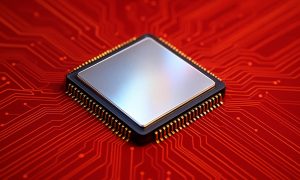

Introduction
Quantum chips—also known as quantum processors or quantum processing units (QPUs)—are the hardware backbone of quantum computing companies. They exploit quantum mechanical phenomena such as superposition, entanglement, and coherence to process information in ways that classical chips cannot. In global quantum technology 2025, advances in materials, fabrication, error correction, and scalability are pushing quantum computing from theory toward increasingly useful applications.
Governments, research institutions, and private players are investing heavily. As of early 2025, public investments in quantum technology globally have surpassed USD 40–50 billion, with China, the EU (especially Germany), Japan, Canada, India, and the United States among the leaders. ECIPE+2CEPA+2
This article provides a detailed breakdown of leading quantum chip manufacturers and quantum computing companies by country or region (UK, Europe, US, India, China, Germany, Canada, France, Japan), comparing government support, private initiatives, notable companies, and emerging trends. It will serve educators, policymakers, research institutions, and industry leaders seeking both current data and insight into future directions.
Country-Wise / Region-Wise Breakdown of Top Quantum Chip Manufacturers
Below are summaries by country/region, with key companies & projects, plus comparisons.
| Country / Region | Notable Quantum Chip Manufacturers / Companies | Key Technologies & Projects | Government Support, Investment & Private Initiatives |
|---|---|---|---|
| United States (US) | – IBM Quantum – superconducting qubits, large qubit count devices; detailed roadmap toward 4,000-plus qubits by 2029. Technology Magazine+1 – Google Quantum AI – developed Willow chip with improved error correction & scalability. Technology Magazine+1 – Rigetti Computing – superconducting quantum integrated circuits, own fabrication (“Fab-1”) facility. Technology Magazine+1 – IonQ – trapped-ion quantum hardware; acquisition of Oxford Ionics to boost ion-trap-on-a-chip capacity. barrons.com+2Technology Magazine+2 – Quantinuum – merged Honeywell Quantum Solutions + Cambridge Quantum, trapped-ion machines, high quantum volume. Technology Magazine+1 – PsiQuantum – focusing on photonic quantum chips, leveraging existing semiconductor & photonics manufacturing. Reuters+1 | Technologies include superconducting qubits, ion traps, photonic chips, advanced error correction, chip-scale integration. Projects: Willow chip (Google), new quantum processors from IBM, ion trap miniaturization via Oxford Ionics/IonQ. | The U.S. private sector leads in quantum chip R&D; federal funding is increasing. For example, US leads in share of global private investment (~44%), though under heavier competition from China and EU. ECIPE+2The Quantum Insider+2 IBM has announced a multi-year large investment commitment (USD 150B over 5 years) including quantum technologies. Reuters |
| UK | – Quantum Motion – developing silicon-based quantum chips, aiming to use standard CMOS techniques. The Times – Oxford Quantum Circuits (OQC) – superconducting / photonic hybrid designs, from Oxford. – Universal Quantum – UK startup focusing on scalable architectures, microwave technology. – Riverlane, KETS, others – active in quantum hardware / quantum chip research. Quantum Zeitgeist+1 | UK companies tend to focus on niche, scalable or hybrid chip architectures (silicon CMOS, photonics, microwave, etc.). Example: Quantum Motion’s use of CMOS-compatible design. Also, OQC, Universal Quantum have goals for large-scale logical qubit systems. | The UK government has a National Quantum Strategy, providing funding for quantum chip research, Centres like the National Quantum Computing Centre (NQCC) in Oxfordshire. Competitive grants, collaborations with academia. Private venture backing also active. Example of UK government support: acquisition of Oxford Ionics (via IonQ) is facilitated by UK regulatory environment. barrons.com+1 |
| Europe (excluding UK & Germany & France) | – IQM (Finland / pan-EU) – designs and manufactures quantum computers; recently valued over USD 1B after major investment, building fabs in Espoo and Grenoble. The Wall Street Journal – Institutes & startups in Spain (e.g. parts of EU quantum infrastructure) – EU-wide projects integrating quantum chip manufacturing, control, measurement, quantum communication. | Focus is on integrated European quantum chip manufacturing (fabs), standardising performance metrics, quantum communication integration. EU is encouraging photonic chips, cold atom / neutral atom approaches as well. | EU has mobilised > €11 billion in public investment in quantum technologies; Germany is a major contributor. Collective EU strategies for quantum, with Horizon Europe, European Quantum Flagship, etc. CEPA+2ECIPE+2 |
| Germany | Companies & research institutions: e.g. part of EU Flagship quantum chip projects; German firms contributing via quantum hardware, specialized components, cryogenics. (Specific names: IQM is pan-EU including Germany; in Germany, academic labs + industrial partners like Bosch / Siemens involved in quantum sensor / communication segments.) | Key projects involve superconducting qubits, photonics, integrated circuits and quantum sensors. Germany emphasises both hardware and supply-chain components (cryogenics, quantum readout, control). | Substantial government funding via national programmes; Germany is one of EU’s biggest contributors. Strong academic-industry collaboration. |
| China | – QuantumCTek – partnered with China Telecom Quantum Group, involved in the chip “Xiaohong” and “Tianyan-504” (a 504-qubit chip project). The Quantum Insider+1 – Origin Quantum – Hefei-based, involved in superconducting quantum chips and related R&D. MERICS+1 – SpinQ Technology – prior successes exporting superconducting quantum chips; Chinese state support and overseas collaborations noted. SpinQ | China tends to build large, state-led quantum chip projects. Emphasis on scale (qubit count), coherence, chip reliability. Projects such as Tianyan-504 place China at high qubit-count thresholds. | Very high public investment. China leads in public funding (~USD 15bn) for quantum technology as of recent assessments. Also has national labs, CAS spin‐outs, strong coordination. Private sector less visible at chip hardware frontier than public/state labs. ECIPE+2CEPA+2 |
| India | – QpiAI – an Indian startup under India’s National Quantum Mission; in 2025 launched a 25-qubit superconducting quantum computer (named “Indus”) and is expanding under government co-investment. The Quantum Insider+1 – Other Indian companies/startups: QNu Labs, Quanastra, Qubit Pulse etc focusing on various parts of quantum hardware/software. F6S | India’s strengths are emerging: building quantum chips, superconducting qubits, establishing infrastructure (test/benchmarking, thematic hubs), pushing full-stack systems. | The Government of India in 2025 has committed via its National Quantum Mission substantial funds, seeking both public and private engagement. Rolling calls for startup proposals under quantum computing, quantum communication, sensing. The recent launch of “Indus” by QpiAI being a key milestone. The Quantum Insider+2The Quantum Insider+2 |
| Canada | – D-Wave Quantum – annealing quantum processors and quantum chips; long established, commercial quantum systems. Technology Magazine+1 – Academic partnerships and government labs contribute to photonics and superconducting chip research. | Quantum annealing vs gate-model; lower error tolerance but useful for optimisation. Canada’s projects often involve academia plus private / govt. funding. | Significant government funding (federal + provincial) for quantum science; private sector and startups are growing. Canada is among early funders in the global quantum private investment share. ECIPE |
| France | – Alice & Bob – French startup working on “cat qubit” architectures for quantum error correction and logical qubits. SpinQ+1 – Pasqal – neutral atom quantum processors; full-stack approach; supported by French government funding, defense innovation. SpinQ+1 | Technologies: neutral atoms, error correction methods (cat qubits), hybrid optics/hardware. Strong focus on logical qubit architecture and noise suppression. | France is investing via defense, innovation funds; support from government for quantum computing startups; alignment with EU quantum strategies. |
| Japan | – Fujitsu + RIKEN – in collaboration developed a 256-qubit superconducting quantum computer (from earlier 64-qubit devices) via their partnership. SpinQ – Other academic / government / industrial labs pushing hardware, photonics, spin qubits etc. | Emphasis on high qubit counts, reliability, scaling; also strong in materials, precision engineering, control electronics. | Japan has committed large public investment (~USD 7.4 billion in early 2025) for quantum technologies; R&D programs, infrastructure, industrial partnerships. McKinsey & Company |
Government vs Private Investment Comparison
- Public vs Private Funding: China leads in public investment (~USD 15 billion), followed by EU (~USD 10 billion) and then the U.S. (~USD 5-6 billion) in recent comparative analyses. ECIPE+1
- Private Sector Activity: The U.S. has approx 44% of global private investment in quantum technology; the UK, Canada, Australia, China also contribute. ECIPE+1
- National Programs: National Quantum Missions (India), Quantum Flagship (EU), UK Quantum Strategy, China’s state-led quantum technology roadmap, Japan’s quantum financing, etc. These provide grants, infrastructure, regulatory support.
Emerging Players & Future Trends (2025 and Beyond)
Emerging Players
- QpiAI (India): The launch of “Indus” (25 qubits) marks a turning point for Indian quantum chip hardware manufacturing. The Quantum Insider
- SpinQ Technology (China): Export of superconducting quantum chips, increasing presence overseas. SpinQ
- Alice & Bob (France/US): The cat qubit architecture is promising for error correction efficiency. SpinQ
Technological Trends
- Error correction & logical qubits: As qubit counts grow, error rates must fall. Architectures like cat qubits, improvements in gate fidelity (e.g. in Quantinuum, Google) are key.
- Photonic / neutral atom / superconducting / ion-trap hybrid approaches: No dominant universal architecture yet; many companies are hedging across types.
- Standardization and performance metrics: Quantum volume, fidelity, coherence time more rigorously compared; Europe pushing standard metrics.
- Scalability & manufacturability: Using standard semiconductor foundries or CMOS compatible processes (e.g. UK-based designs, photonic integration) will help.
Challenges & Risks
- Hardware coherence, cooling, cryogenics, error correction overhead remain significant.
- Talent / skills shortage, especially for complex fabrication and quantum control electronics.
- Geopolitical risk: Export controls, supply chain vulnerabilities, regulatory barriers.
- Funding continuity: quantum R&D is long-term; short-term returns are rare.
How to Evaluate & Adopt Quantum Chip Technology
How to Evaluate Quantum Chip Manufacturers & Adopt Quantum Chip Technology
-
Define Use-Case Requirements
- Identify problem domains: cryptography, materials science, optimisation, sensing, etc.
- Determine necessary qubit type (superconducting, photonic, ion-trap, neutral atom) and qubit count, coherence time, logical qubit requirements.
-
Assess Hardware Specifications
- Gate fidelities, coherence times, connectivity between qubits, logical qubit threshold.
- Fabrication method: are they using CMOS or semiconductor foundry standard, photonic integration, or custom labs?
-
Evaluate Scalability & Manufacturability
- Can the provider scale from labs to production? <br> – Access to foundries, capability for mass fabrication, yield, reproducibility.
-
Consider Software & Ecosystem Support
- Are tools (SDKs, control electronics, error correction software) mature? <br> – Integration with cloud platforms, ability to test and simulate, developer tools.
-
Innovation & Roadmap Transparency
- Does the company provide a clear roadmap (number of qubits, error correction, logical qubit goals)? <br> – Patents, peer-reviewed publications, collaborations with academia.
-
Regulatory, Security & Ethical Considerations
- Data security, hardware supply chain, national/regional regulations. <br> – Potential use in sensitive sectors (e.g. cryptography, defense, healthcare).
-
Funding, Cost & Partnerships
- Project cost, total cost of ownership, support from governments or grants. <br> – Partnerships with universities, national labs, or consortia to leverage infrastructure.
Institutions following these steps are more likely to choose quantum chip manufacturers that align with their strategic, technical, and budgetary goals.
Global Outlook & Conclusion
In 2025, quantum chip manufacturers and quantum computing companies are entering a phase where hardware is no longer purely experimental: high qubit-count devices, improved error correction, and manufacturable architectures are becoming more common.
- China and the EU are strongly pushing large public investments to gain strategic advantage. The U.S. remains a global leader in the private sector, with many companies investing in diverse architectures.
- Emerging players like India are crossing thresholds (e.g. quantum computers with tens of qubits) and building domestic ecosystems. UK and France are producing innovative architectural advances (silicon CMOS compatibility, cat qubits, photonics).
- For many sectors (education, research, policy), early involvement with quantum is critical: tools, collaborations, regulatory preparedness.
Overall, the global quantum technology landscape in 2025 is competitive, diverse, and accelerating. Those governments, institutions, and companies that align strategic investment, strong technical roadmap, and ecosystem partnership are most likely to shape the quantum future.
References
- “Benchmarking Quantum Technology Performance” — ECIPE: public investment comparisons in China, EU, US. ECIPE
- “Top 10: Quantum Computing Companies (2025)” — Technology Magazine, listing key companies & their strengths. Technology Magazine
- “The Year of Quantum: From concept to reality in 2025” — McKinsey, reporting public investment in Japan, Spain etc., and shift from development toward deployment. McKinsey & Company
- “Meet the companies racing to build quantum chips” — TechCrunch and SpinQuanta, overview of head-to-head players. TechCrunch+1
- “India eyes global quantum computer push — and QpiAI is its chosen vehicle” — India’s National Quantum Mission and QpiAI’s role. TechCrunch
- “China creates its largest ever quantum computing chip (Tianyan-504)” — China’s 504-qubit chip project by QuantumCTek / CTQG. The Quantum Insider+1
- “European Quantum Computer Company IQM Tops $1 Billion Valuation” — IQM’s growth and pan-EU expansion. The Wall Street Journal
- “Alice & Bob cat qubit architecture” — Alice & Bob in France/US, and their error correction / architecture strategy. SpinQ
Frequently Asked Questions (FAQs)
Q1. What counts as a quantum chip manufacturer?
Quantum chip manufacturers are companies or institutions that design, fabricate, and/or integrate quantum processors. These processors may use different qubit technologies such as superconducting, ion-trap, photonic, neutral atoms, or spin qubits. In addition, they provide supporting components like control electronics, cooling systems, and error-correction infrastructure.
Q2. Which countries are leading in quantum chip manufacturing in 2025?
In 2025, leading countries include:
- China – strong public investment and high-qubit count devices.
- United States – many private quantum chip companies with diverse architectures.
- European Union (Germany, Finland, France) – coordinated projects and funding.
- Japan, UK, Canada, and India – all are building strong national quantum ecosystems.
Q3. What are the main challenges in scaling quantum chips to useful sizes?
Some of the biggest challenges are:
- Managing high error rates and qubit decoherence.
- Cooling requirements (cryogenic infrastructure).
- Scalability of chip fabrication (yield and reproducibility).
- Inter-qubit connectivity.
- Error-correction overheads.
- Supply chain limitations and regulatory constraints.
Q4. What should policymakers consider when supporting quantum chip manufacturers?
Key considerations for policymakers include:
- Ensuring sustained long-term funding.
- Providing infrastructure such as labs, fabs, cooling, and measurement facilities.
- Developing a skilled workforce of engineers and physicists.
- Encouraging partnerships between academia and industry.
- Supporting standardization efforts.
- Securing supply chains and establishing clear regulations.





















